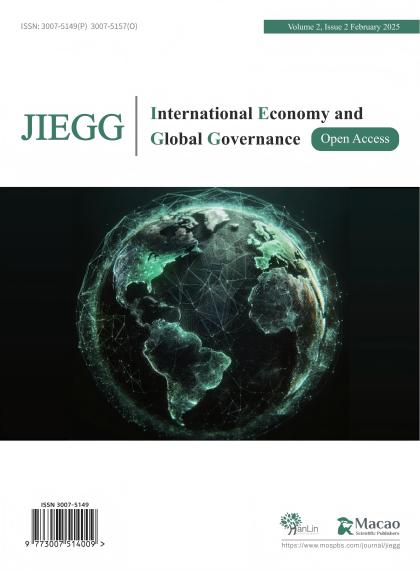-
Allard, K. (1995). Somalia Operations: Lessons Learned. National Defense University, Institute for National Strategic Studies: Washington, DC.
-
Bay, A. (2013). Congo complexity will test U.N. offensive peacekeeping, Hearst newspapers, April 29 2013.
-
Béland D. & Howlett, M. (2016). The Role and Impact of the Multiple-Streams Approach in Comparative Policy Analysis, Journal of Comparative Policy Analysis: Research and Practice, (3): 221-227.
-
Bellamy, A. J. & Williams, P. D. (2009). The West and Contemporary Peace Operations. Journal of peace research. [Online] (1): 39–57.
-
Black Hawk Down. (2001). Directed by Ridley Scott, USA, Revolution Studios Productions.
-
Day, A. (2017) The future of UN peace operations in a changing conflict environment, United Nations peacekeeping.
-
de Coning, C. et al. (2019). United Nations Peace Operations in a Changing Global Order. 1st ed. 2019. Cedric. de Coning & Mateja. P. (eds.). [Online]. Cham: Springer Nature.
-
Duffield, M. R. (2007). Development, security and unending war: governing the world of peoples. Cambridge: Polity.
-
Duursma, A., Bara, C., Wilén, N., Hellmüller, S., Karlsrud, J., Oksamytna, K. & Wenger, A. (2023). UN peacekeeping at 75: achievements, challenges, and prospects. International Peacekeeping, 30(4), 415-476.
-
Von Einsiedel, S., Bosetti, L., Cockayne, J., Salih, C., & Wan, W. (2017). Civil war trends and the changing nature of armed conflict. Occasional paper, (10): 1-10.
-
Findlay, T. (2002) The use of force in UN peace operations. Oxford: Oxford University Press.
-
Finnemore, M., & Sikkink, K. (1998). International norm dynamics and political change. International organization, 52(4), 887-917.
-
Howard, L. M., & Dayal, A. K. (2018). The use of force in UN peacekeeping. International Organization, 72(1), 71-103.
-
Julian, R. & Gasser, R. (2019). Soldiers, Civilians and Peacekeeping – Evidence and False Assumptions, International Peacekeeping, 26(1), 22-54.
-
Kapteijns, K. (2013). Test-firing the ‘new world order’ in Somalia: the US/UN military humanitarian intervention of 1992–1995, Journal of Genocide Research, 15(4), 421-442.
-
Khalil, M. A. (2018). The world needs robust peacekeeping not aggressive peacekeeping, humanitarian law and policy, https://blogs.icrc.org/law-and-policy/2018/05/15/world-needs-robust-peacekeeping-not-aggressive-peacekeeping/ [Accessed 21st January 2025].
-
Kingdon, J.W. (1984). Agendas, alternatives and public policies, Boston, MA: Little, Brown.
-
Krishnan, S. (2020). UN Peacekeeping, Responsibility to Protect and Humanitarian Intervention. India Quarterly, 76(1), 120-135.
-
New York Times. (23 May 2005). U.N. Forces Using Tougher Tactics to Secure Peace, New York Times.
-
Koops, A. J., MacQueen, N., Tardy, T., & Williams, D, P. (eds). The Oxford Handbook of United Nations Peacekeeping Operations. Oxford: Oxford University Press, pp. 144-152+779-789.
-
Ottovay Jorgensen, M. (2025). Evaluating UN peacekeeping deployment problems: the case of the United Nations Emergency Force, 1956–1967. Interventions, 1-23.
-
Otto, S., Kube, F., & Smidt, H. (2024). UN peacekeeping upon deployment: Peacekeeping activities in theory and practice. Cooperation and Conflict, 59(4), 488-509.
-
Panagiotou, R. (2011). The Centrality of the United Nations in Russian Foreign Policy. Journal of Communist Studies and Transition Politics 27 (2):195–216.
-
Pushkina, D. B., & Kalina, R. V. (2024). USA Policy Towards United Nations: The Case of UN PKOs in the Democratic Republic of Congo. Вестник Волгоградского государственного университета. Серия 4: История. Регионоведение. Международные отношения, 29(1), 157-168.
-
Stone, D. (2012). Policy paradox: the art of political decision making. 3rd ed. New York: W.W. Norton & Company.
-
Tardy, T. (2011). A Critique of Robust Peacekeeping in Contemporary Peace Operations, International Peacekeeping, 18(2): 152-167.
-
United Nations (1992). An Agenda for Peace, Preventive Diplomacy, Peacemaking and Peace-Keeping: Report of the Secretary-General Pursuant to the Statement Adopted by the Summit Meeting of the Security Council on 31 January. New York: United Nations.
-
United Nations (1995). Supplement to An Agenda for Peace: Position paper of the Secretary-General on the Occasion of the Fiftieth Anniversary of the United Nations. New York: United Nations.
-
United Nations Department of Peacekeeping Operations (2003). Handbook on United Nations Multidimensional Peacekeeping Operations.
-
United Nations (2020). 25 Years after Srebrenica Genocide, ‘Peace Is Still Fragile’. Secretary-General Warns in Anniversary Message, Calling for Steadfast Commitment to Reconciliation, United Nations Department of Peacekeeping Operations, https://peacekeeping.un.org/en/25-years-after-srebrenica-genocide-peace-is-still-fragile-secretary-general-warns-anniversar.
-
United Nations (2024). Troop and police contributor, United Nations Peacekeeping, https://peacekeeping.un.org/en/troop-and-police-contributors.
-
Zahariadis, N. (2014). Ambiguity and multiple streams. In P.A. Sabatier & C.M. Weible (eds), Theories of the policy process. Boulder, CO: Westview Press.

